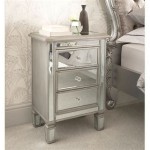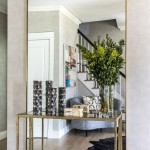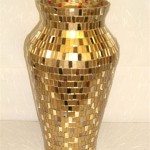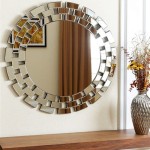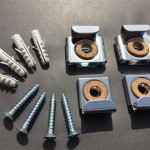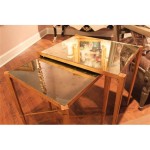Antique Sideboard Buffet With Mirror: A Timeless Investment
An antique sideboard buffet with a mirror represents more than just a piece of furniture; it embodies a rich history, superior craftsmanship, and enduring style. Popular from the late 18th century through the early 20th century, these elegant pieces served both functional and aesthetic purposes in dining rooms and parlors. Their versatility and decorative appeal have ensured their continued desirability among collectors, interior designers, and homeowners alike. Understanding the characteristics, value drivers, and care requirements of these antique buffets is essential for anyone considering acquiring or owning one.
The term "sideboard" and "buffet" are often used interchangeably, although subtle distinctions exist. Generally, a sideboard is a lower, wider piece of furniture designed primarily for serving food and storing dining essentials. A buffet, on the other hand, may be taller and incorporate more storage compartments, often with a mirrored back. The addition of a mirror not only enhances the piece's decorative presence but also serves a practical purpose by reflecting light and creating a greater sense of space. The mirror also allowed diners to subtly check their appearance without being overtly obvious.
Antique sideboard buffets with mirrors were crafted from a variety of hardwoods, including mahogany, walnut, oak, and cherry. The choice of wood, along with the quality of the construction and embellishments, significantly impacts the value and desirability of the piece. The style of these buffets evolved over time, reflecting prevailing aesthetic trends, from the Neoclassical elegance of the late 18th century to the ornate carvings of the Victorian era and the streamlined forms of the early 20th century.
Identifying Key Features and Styles
Determining the age, origin, and style of an antique sideboard buffet with a mirror requires a careful examination of its key features. Several elements contribute to its classification and value, including the wood type, hardware, joinery, carvings, and overall design.
The type of wood used provides clues about the piece’s age and origin. Mahogany, prized for its rich color and fine grain, was a popular choice for high-quality sideboards during the late 18th and early 19th centuries. Walnut, another favored wood, offers a warm, brown hue and distinctive grain patterns. Oak, known for its durability and strength, became more prevalent in the late 19th and early 20th centuries, particularly in Arts and Crafts and Mission style furniture. Cherry, with its reddish-brown color and smooth texture, was often used in American furniture.
The hardware, including handles, knobs, and escutcheons, can be original to the piece or replaced over time. Original hardware in good condition often enhances the value of the buffet. Examining the style and material of the hardware can offer insights into the piece’s age and maker. For example, brass pulls with Neoclassical motifs were common in the late 18th century, while ornate cast iron or glass knobs were popular during the Victorian era.
The joinery techniques used in the construction of the buffet are also indicative of its age and quality. Dovetail joints, known for their strength and durability, were commonly used to connect drawers and cabinet sides. Hand-cut dovetails suggest an earlier date, while machine-cut dovetails are indicative of later production methods. Other joinery techniques, such as mortise-and-tenon joints and tongue-and-groove construction, also provide clues about the craftsmanship and age of the piece.
Carvings and embellishments can significantly enhance the aesthetic appeal and value of an antique sideboard buffet with a mirror. Neoclassical sideboards often feature delicate carvings of swags, garlands, and urns, reflecting the influence of ancient Greek and Roman art. Victorian sideboards are characterized by more elaborate carvings of floral motifs, scrolls, and figures. The quality and detail of the carvings are indicative of the skill of the craftsman and the overall quality of the piece.
Several distinct styles of antique sideboard buffets with mirrors emerged over time. The Hepplewhite style, popular in the late 18th century, features elegant, slender designs with tapered legs and inlaid details. The Sheraton style, contemporary to Hepplewhite, is characterized by more angular forms, reeded legs, and contrasting veneers. The Empire style, popular in the early 19th century, boasts bold, architectural forms with classical motifs and heavy ornamentation. The Victorian era saw a proliferation of styles, including Rococo Revival, Gothic Revival, and Renaissance Revival, each with its own distinctive characteristics. The Arts and Crafts movement of the late 19th and early 20th centuries emphasized simplicity, craftsmanship, and natural materials, resulting in sideboards with clean lines and minimal ornamentation.
Determining Value and Authenticity
Assessing the value and authenticity of an antique sideboard buffet with a mirror requires careful consideration of several factors. Condition, rarity, provenance, and market demand all play a role in determining its worth. Consulting with reputable antique dealers or appraisers is recommended for accurate valuations.
The condition of the buffet is a critical factor in determining its value. Pieces in excellent original condition, with minimal wear and tear, are generally more valuable than those that have been heavily restored or altered. Repairs, replacements, and refinishing can detract from the value of the piece, especially if they are not done sympathetically. However, minor wear and tear, such as scratches and dings, can be acceptable, as they are often seen as evidence of the piece’s age and history.
Rarity is another important factor in determining value. Sideboard buffets with mirrors that are rare due to their style, maker, or unique features are typically more valuable than more common examples. Pieces made by renowned furniture makers or those with documented provenance often command higher prices. Researching the history of the piece and its potential maker can help determine its rarity and value.
Provenance, or the history of ownership, can add significant value to an antique sideboard buffet with a mirror. Pieces with documented ownership by notable individuals or families, or those with a well-established history, are often more desirable to collectors. Provenance can be established through receipts, letters, photographs, or other historical documents.
Market demand also influences the value of antique sideboard buffets with mirrors. Trends in interior design and collecting preferences can affect the demand for certain styles or periods. Researching recent auction results and sales data can provide insights into current market trends and values.
Authenticating an antique sideboard buffet with a mirror requires careful examination of its construction, materials, and markings. Look for signs of hand craftsmanship, such as hand-cut dovetails and uneven surfaces. Examine the wood for signs of age, such as patina and wear. Check for original hardware and markings, such as maker’s labels or stamps. Comparing the piece to known examples of similar styles and periods can also help determine its authenticity.
Care and Preservation Techniques
Proper care and preservation are essential for maintaining the beauty and value of an antique sideboard buffet with a mirror. Regular cleaning, careful handling, and appropriate environmental controls can help protect the piece from damage and deterioration.
Regular cleaning is essential for removing dust and dirt that can accumulate on the surface of the buffet. Use a soft, lint-free cloth to gently dust the piece on a weekly basis. Avoid using harsh chemicals or abrasive cleaners, as they can damage the finish. For stubborn dirt or grime, use a mild soap diluted in water, applied with a soft cloth. Be sure to dry the surface thoroughly after cleaning.
Careful handling is important to prevent damage to the buffet. Avoid placing heavy objects on the surface, as this can cause scratches or dents. When moving the piece, lift it carefully from the base, rather than dragging it across the floor. Use furniture pads or blankets to protect the surface during transport.
Maintaining appropriate environmental conditions is crucial for preserving the wood and finish of the buffet. Avoid exposing the piece to extreme temperatures or humidity, as this can cause warping, cracking, or discoloration. Maintain a consistent temperature and humidity level in the room where the buffet is displayed. Consider using a humidifier or dehumidifier to control the humidity, especially in dry or humid climates.
Protecting the mirror is also important. Clean the mirror with a glass cleaner specifically designed for antiques. Avoid spraying the cleaner directly onto the mirror, as this can damage the silver backing. Instead, spray the cleaner onto a soft cloth and gently wipe the mirror surface. Be careful not to scratch the mirror with abrasive cleaners or cloths.
For more extensive cleaning or repairs, consider consulting with a professional furniture restorer. A skilled restorer can repair damage, refinish the surface, or replace missing hardware without compromising the value or authenticity of the piece. Choose a restorer who has experience working with antique furniture and who uses conservation-grade materials and techniques.
By understanding the characteristics, value drivers, and care requirements of antique sideboard buffets with mirrors, owners can appreciate and maintain these timeless pieces for generations to come. The combination of beauty, functionality, and historical significance makes them a valuable addition to any home or collection.

Antique Walnut Sideboard Buffet Marble Top Mirror Shelf Dovetailed 20d48w37h60h Is Not Free

Antique Sideboard Cabinet With Mirror Side Board Dresser Storage

Common Ground Antique Sideboard Buffet Makes A Comeback Decor

Pine Antique Sideboard Serving Buffet With Mirror

Antique Victorian Sideboard In Carved Walnut With Mirror 1880 For At Pamono

Antique Oak Sideboard Buffet With Mirror Shelf 51 H X 22 D 43 W Furniture Inspiration

Antique Barley Twist Tiger Oak Mirror Back Sideboard Buffet Scotland B1698 At 1stdibs With

Antique Oak Sideboard Carved Buffet

Antique Victorian Mahogany Mirror Back Sideboard Kernow Furniture

Victorian Carved Solid Walnut Sideboard Buffet Cabinet With Mirror Back 1880s
